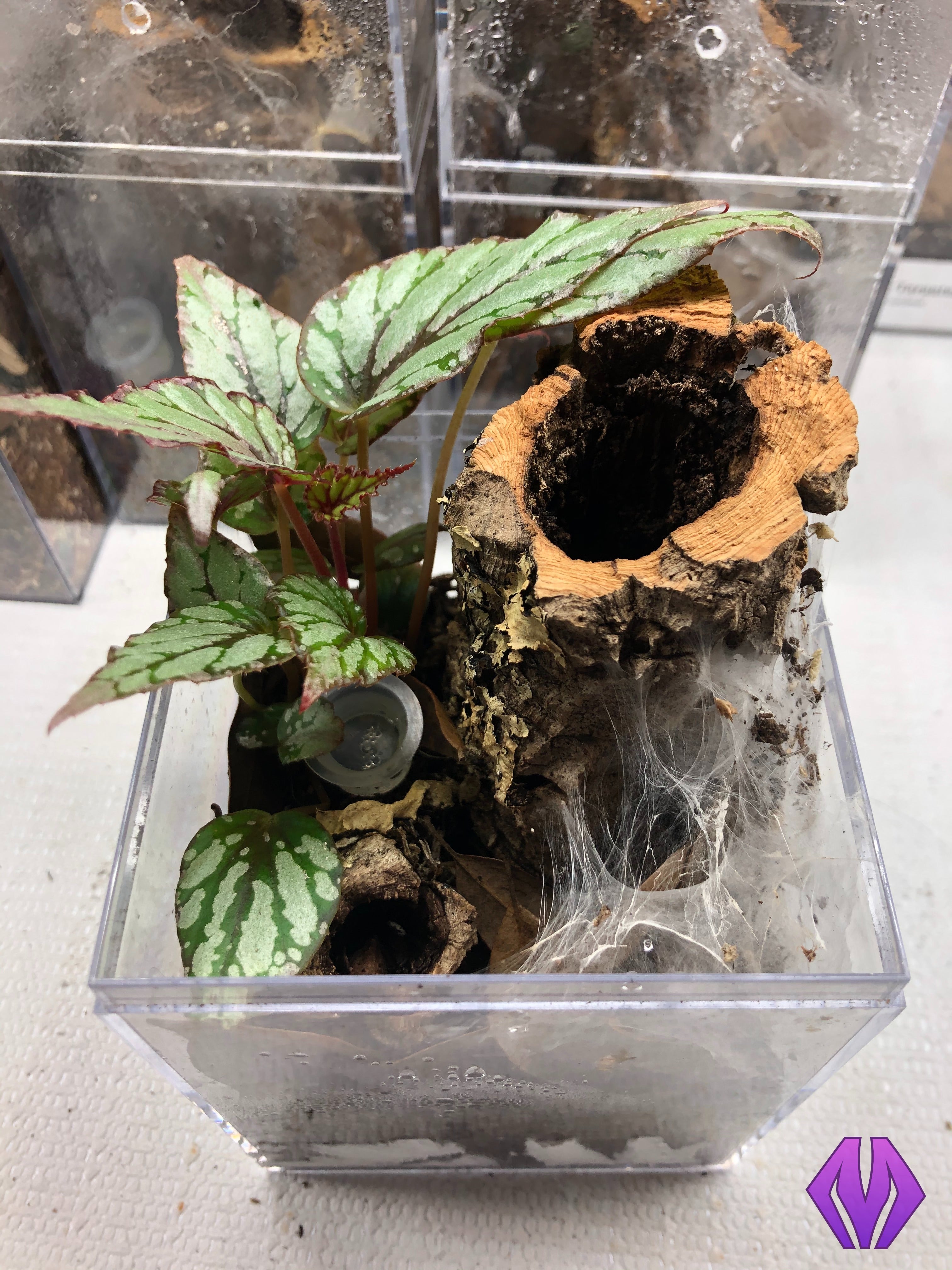Caribena versicolor care guide
description
the Antilles pinktoe (Caribena versicolor) is a stunning arboreal tarantula that every hobbyist should have in their collection. The coloration and iridescence of their carapace and setae are best appreciated in person. Formerly classified as an Avicularia species, C. versicolor was reclassified into its own genus along with C. laeta in 2017 due to distinct morphological traits (Fukushima & Bertani, 2017). C. versicolor is often dismissed as a delicate or difficult tarantula species to keep, but we believe this comes from a lack of understanding and adapting their natural history.
-

adult female
-

third instar spiderling
-

juvenile
natural history
C. versicolor is endemic to the island of Martinique in the Lesser Antilles, where the average daily temperature is a near-constant 80-82°F and the humidity remains very high throughout the year. Rainfall is often and plentiful on the northern part of the island where this species occurs (Climate - Martinique). They live in hollows in trees and vegetation and are very common in their small range. Check out this video from World of Spiders, which shows Antilles pinktoes in their natural habitat!
enclosure design
C. versicolor max out at around 6” in diagonal leg span with 5-5.5” being the average for an adult female. Mature males can vary but may also reach this size. We set up all of our C. versicolor adults in Exo Terra brand “Mini Tall” 12” x 12” x 18” glass enclosures, which we prefer due to their built-in cross-ventilation feature, double front-opening doors, locking mechanism, and clean look. The lid might pose an issue with tarantula claws getting stuck in the mesh, so consider replacing it with our PVC lid insert or replacement lid. We place a few cork bark pieces (hollow tubes are best) in a vertical position for hide options, fill the enclosure with 3-4” of megamix tropical substrate, plant a few foliage and vining plants, and provide a water dish. We set up spiderlings from 3/4”-2.5” in our purplebox 4x4x7 enclosure similarly, and juveniles from about 2-4” are housed in Exo Terra brand “Nano Tall” 8” x 8” x 12” enclosures.
Proper husbandry of this species absolutely requires ample ventilation to prevent stagnant conditions, which can be improved with forced airflow. We keep a small portable fan in our spider room on the low setting. If you choose to use a fan, be sure to place it so it is not blowing directly at your enclosure. The Stack Effect or the Chimney Effect can also be utilized on a small scale to make a big difference.
maintenance
At Marshall Arachnids, we strive to take each species’ natural history into account when designing and maintaining vivaria for our spiders. We provide our C. versicolor adults with a thermal gradient of about 72 to 82°F, with the top of the enclosure being the warmest. Each spider has the opportunity to thermoregulate by moving around the enclosure as they please. We mist daily to provide fresh water droplets to drink from and to raise ambient humidity for live plants. We add water to the substrate for live plants and clean-up crew as needed. Change the water dish every other day, or as soon as it is soiled. For adults, we tong-feed appropriately-sized live dubia roaches or crickets every 7-14 days, but not on a set schedule. For slings, we offer food approximately every 5-7 days or as-needed. C. versicolor tend to seal their hide off with webbing before and during molting; during this time, we are hands-off and do not offer food until the spider emerges post-molt. These spiders can safely go weeks on end without food, so do not be concerned if this is the case. Just continue to mist and provide clean water regularly.
We encourage keepers to avoid being mechanical about the care of their tarantulas. Note the relative abdomen size, molt rate, etc. when deciding whether to offer prey. Note the moisture level in the enclosure (is there condensation building up on the sides? Does the substrate appear damp? These may be signs that you are misting too heavily, or need to increase air flow/ventilation) and adjust your routine accordingly. Don't chase after specific humidity numbers, but do use them to inform how often to mist, because lower ambient humidity may lead to faster dehydration rates and vice versa. And lastly, when in doubt, avoid changing anything or disturbing the spider and reach out to us with questions!
Fun Fact! These spiders are a brilliant sparkling electric blue with abdominal stripes as spiderlings. Like most other species in the Aviculariinae subfamily, they undergo dramatic changes in coloration from spiderling to adult stage. Adults have reddish-pink to purplish hair on the legs and abdomen, with an iridescent green carapace.






